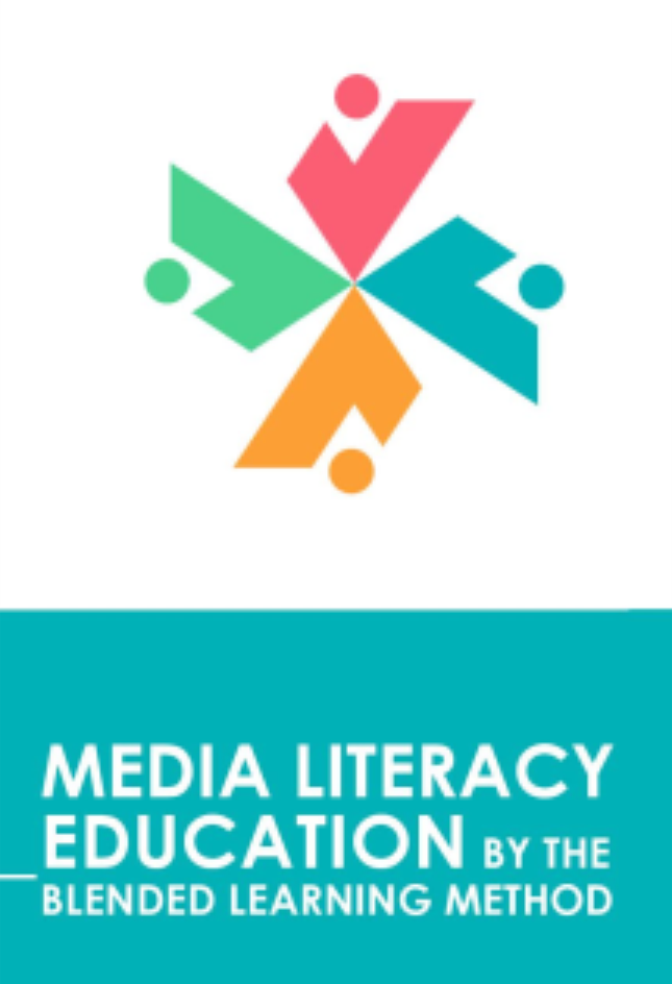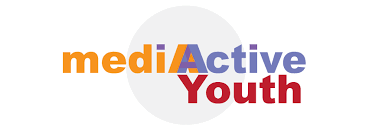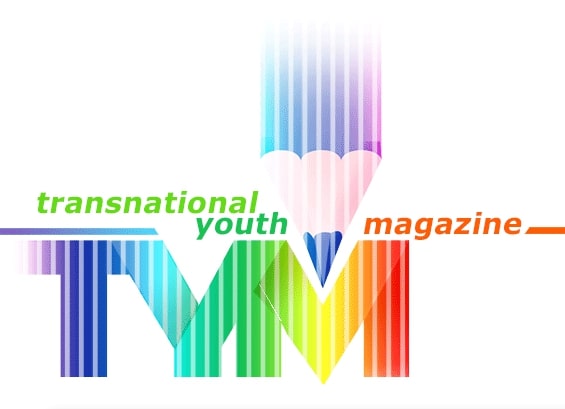
Media Literacy Education by the Blended Learning
Method
- Teacher: Arta Abduli

Media Literacy Education by the Blended Learning
Method

Media Literacy Education by the Blended Learning
Method

Media Literacy Education by the Blended Learning
Method

Media Literacy Education by the Blended Learning
Method

Media Literacy Education by the Blended Learning
Method

Media Literacy Education by the Blended Learning
Method

Media Literacy Education by the Blended Learning
Method

Media Literacy Education by the Blended Learning
Method

Media Literacy Education by the Blended Learning
Method

Media Literacy Education by the Blended Learning
Method


“Capacidades mediáticas para los jóvenes activistas, ¿cómo crear un contenido cautivador en las redes sociales?” es un curso interactivo y multilingüe (inglés, español y serbio) en Moodle que complementa el curso de alfabetización mediática y dota a los participantes de las habilidades y conocimientos prácticos necesarios para escribir, crear, publicar y compartir mensajes mediáticos en forma de artículos y videos cortos para las redes sociales y crear un canal de YouTube.
Durante siglos, la capacidad de producir contenidos impresos y mediáticos pertenecía a unos pocos privilegiados con acceso a la educación y la tecnología para hacerlo. Hoy en día, cualquiera puede publicar casi todo en pocos minutos. Pero ¿se trata de periodismo o de exponer opiniones, de activismo ciudadano o de elaboración de políticas? Este curso está dirigido principalmente a aquellos jóvenes y trabajadores juveniles que deseen crear contenidos mediáticos para expresarse, defender sus actitudes, luchar por sus objetivos e inspirar e inducir un cambio social positivo.
El objetivo de este curso es ofrecer un contenido atractivo e inspirador con el doble propósito de:
1.enseñar a los participantes a utilizar los medios de comunicación como herramienta de activismo y cambio social;
2. hacer que los participantes se conviertan en activistas mediáticos eficaces (agentes de cambio).
Estos temas estan divididos en tres grupos principales. El primero, ¿Tiene estilo? contiene una guía práctica sobre el modo, la composición y el buen uso que subyace en toda buena escritura. Ofrecerá consejos prácticos para evitar los típicos errores estilísticos y gramaticales en la escritura y ejemplificará las reglas elementales de estilo, composición y buena escritura. Esta sección también ofrecerá instrucciones, "trucos" y "cómo" se estructura un argumento, cómo lograr la claridad y la cohesión, ser concreto y específico en la escritura, desarrollar la elegancia y la gracia estilísticas, etc.
Transnational Youth Magazine (TYM), donde puede leer sobre temas de juventud, pero también publicar sus artículos.
Por último, la tercera sección sobre el activismo juvenil en los medios de comunicación ofrecerá historias breves e inspiradoras y estudios sobre los ejemplos recientes más influyentes de activismo juvenil en los medios de comunicación, por ejemplo, la campaña Kony 2012, la ganadora del Premio Nobel de la Paz Malala Yousafzai o la activista medioambiental Greta Thunberg.
La realización de este curso en línea de tres partes permitirá a los participantes comprender el papel y el potencial de los medios de comunicación contemporáneos y el activismo juvenil, pero también obtener las capacidades esenciales de escritura y/o mejorar las ya existentes. De este modo, el curso pretende dotar al participante de una serie completa de capacidades que le permitan participar plenamente, creativamente y activamente en el mundo contemporáneo dominado por la información y la tecnología.


Onlajn kurs "Medijske veštine za angažovane mlade - kako stvarati zanimjlive medijske sadržaje" je interaktivni, višejezični onlajn Mudl kurs (na srpskom, engleskom i španskom jeziku) koji dopunjuje prethodni kurs o medijskoj pismenosti i korisnicima pruža praktične veštine i znanje potrebno kako bi pisali, kreirali, postavljali i širili medijske poruke u obliku članaka, kratkih videa i Jutjub kanala.
Vekovima je sposobnost da proizvode štampane i medijske sadržaje pripadala privilegovanoj manjini koja je imala peistup obrazovanju i tehnologiji koja im je to omogućavala. Danas gotovo svako može da objavi gotovo sve u roku od svega nekoliko minuta. Ali, da li je ovo novinarstvo, ili iznošenje gledišta, građanski aktivizam ili uticaj na političke oduke? Ovaj kurs je prvenstveno namenjen onim mladim ljudima i omladinskim radnicima/radnicama koji žele da stvaraju medijski sadržaj kako bi se iskazali, zagovarali svoje stavove, borili za svoje ideje i inspirisali i podsticali na društvenu promenu. Cilj kursa je stoga da ponudi zanimjliv i podsticajan sadržaj kako bi postigao dvostruki učinak: 1) obučio korisnike kako da koriste medije u svrhu aktivizma i društvene promene; i 2) podstakao ih da i sami budu efikasni medijski aktivisti i akteri promene.
Ove teme su obrađene kroz tri celine. Prva, Imate li stila?, sadrži praktičan vodič kroz stil, kompoziciju pisanih sastava i pravilnu upotrebu koja se nalazi u podlozi bilo kog dobro napisanog teksta. Taj deo pružiće praktične savete kako izbeći tipične stilske i gramatičke greške u pisanju i dati primere osnovnih pravila dobrog stila, kompozicije pisanih sastava i dobrog pisanja. Ova celina će takođe ponuditi uputstva, "trikove" i vežbe o tome kako strukturisati argument, postići jasnoću i jedinstvo u pisanju, biti određen i konkretan, razvijati dopadljiv i elegantan pisani stil itd.
 Druga celina usredsređuje se na sticanje znanja potrebnog za aktivno učešće u novim medijskim oblicima - posebno, kako pisati članke, uključujući neke savete i izvore o istraživačkom, odgovornom novinarstvu i novinarskoj etici, kao i upustvo za pravljenje sopstvenog Jutjub kanala. Ona takođe sadrži i link ka našem redizajniranom Transnacionalnom omladinskom magazinu Transnational Youth Magazine (TYM), gde je moguće čitati, ali isto tako i objaviti, članke o omladinskim pitanjima na engleskom jeziku.
Druga celina usredsređuje se na sticanje znanja potrebnog za aktivno učešće u novim medijskim oblicima - posebno, kako pisati članke, uključujući neke savete i izvore o istraživačkom, odgovornom novinarstvu i novinarskoj etici, kao i upustvo za pravljenje sopstvenog Jutjub kanala. Ona takođe sadrži i link ka našem redizajniranom Transnacionalnom omladinskom magazinu Transnational Youth Magazine (TYM), gde je moguće čitati, ali isto tako i objaviti, članke o omladinskim pitanjima na engleskom jeziku.
Najzad, treća celina o Omladinskom medijskom aktivizmu pružiće kratke i inspirativne priče i slučajeve o najuticajnijim novijim primerima omladinskog aktivizma u/kroz medije, kao što su Koni 2012 kampanja, nobelovka Malala Jusafzai ili ekološkinja Greta Tunberg.
Pohađanje ovog trodelnog kursa omogućiće polaznicima da spoznaju ulogu i mogućnosti savremenih medija i omladinskog aktivizma, kao i da steknu ključne i/ili poboljšaju postojeće veštine pisanja. Ovaj kurs stoga nastoji da učesnike opremi nizom veština koje će im pružiti puno, kreativno i aktivno učešće u današnjem svetu, u kom dominiraju informacije i tehologija.


“Curso avanzado de alfabetización mediática” es un curso interactivo y multilingüe (inglés, español y serbio) en Moodle sobre alfabetización mediática y pensamiento crítico.
El curso proporciona conocimientos y habilidades esenciales sobre alfabetización mediática y pensamiento crítico, necesarios para comprender los medios de comunicación contemporáneos y sus contenidos, y para entender e interpretar los mensajes que recibimos y enviamos a través de los medios. Los participantes se familiarizarán con los conceptos clave en el campo de los medios, también les capacitaremos y animaremos a adoptar un papel crítico, de ciudadano activo y socialmente responsable ante el panorama mediático contemporáneo. Aprenderán sobre la importancia y la influencia de los medios de comunicación, su omnipresencia, la manera en que los mensajes están restringidos y como se pueden deconstruir, descodificar y evaluar críticamente en términos de calidad, fiabilidad, objetividad, etc., y comprenderán el contexto más amplio en el que funcionan los medios de comunicación y el discurso que utilizan para dirigirse a los usuarios/receptores...
El curso abarcará varios ámbitos amplios del universo de los medios de comunicación, cada uno de los cuales cubre una serie de temas diferentes. Por ejemplo:

“Napredni kurs medijske pismenosti” je interaktivni, višejezični onlajn Mudl kurs (na srpskom, engleskom i španskom jeziku) koji ima za cilj da kod polaznika poboljša medijsku pismenost i kritičko mišljenje.
Kurs pruža osnovna znanja i veštine o medijskoj pismenosti i kritičkom mišljenju, potrebna za razumevanje savremenih medija i medijskih sadržaja, kao i za razumevanje i tumačenje poruka koje primamo i šaljemo putem masovnih medija (ne SMS il sl. nego poruka uopšte!). Kao polaznici, upoznaćete se sa i učiti o ključnim konceptima u oblasti medija i komunikacija, i biti osposobljeni da zauzmete kritičku, aktivnu i društveno odgovornu ulogu prema savremenoj medijskoj stvarnosti. Učićete o značaju i uticaju medija, njihovoj opšteprisutnosti, o načinu na koji su oni konstruisani i kako mogu biti dekonstruisani, dekodirani i kritički razmotreni u pogledu njihovog kvaliteta, pouzdanosti, objektivnosti itd. Nastojaćemo da razumemo i obuhvatimo širi kontekst u kom mediji funkcionišu i diskurs koji oni koriste da bi se obratili i bili ubedljivi svojim korisnicima/primaocima...
Ovaj kurs pokriva nekoliko krupnih oblasti medijskog univerzuma, od kojih svaka sadrži niz različitih tema: Tipovi medija: tradicionalni nasuprot društvenim; Medijska pismenost i novi humanizam kao novi koncepti UNESCO-a; različita shvatanja pojma medijska pismenost; 5W+1H - osnovna pravila dobrog novinarstva (Ko?, Gde? Šta?, Kada?, Kako? i Zašto?); Pronađite uljeza - kako analizirati medijske poruke; Svet u 30 minuta: pravljenje TV dnevnika; Predstavljanje i simbolizam u medijima; Pristranost u medijima; Šta je "medijsko spinovanje"? Lažne vesti i kako ih prepoznati (CRAP test), Moć medija (vrlo kratak pregled istorije masovnih medija, novinarstva i primera najuticajnijih medijskih slučajeva poput Votergejt skandala, Vikiliksa, Panama papira...
In this course, you will learn what media literacy means and how you can improve your own media literacy skills
During 5 weeks, you will learn about the media, including understanding and critically reading the media, finding adequate sources and recognizing fake news, grasping the basic rules of journalism, improving your style, grammar and composition, and your overall writing ability.
KEY CONCEPTS


Online course ‟Media Skills for Engaged Youth – how to create engaging social media content‟ is an interactive, multilingual (English, Spanish and Serbian) online Moodle course that supplements the one on media literacy and equips the participants with practical skills and knowledge required for them to write, create, post and share media messages in the form of articles, short videos for social media and creating a YouTube channel.
For centuries, the ability to produce printed and media content belonged to a privileged few with access to education and technology to do so. Nowadays, anyone can publish almost everything within minutes. But, is this journalism, or stating opinions, citizens’ activism, or policymaking? This course is primarily intended for those young people and youth workers wishing to create media content to express themselves, advocate their attitudes, fight for their goals and inspire and induce positive social change.
The goal of this course is thus to offer engaging and inspiring content with the two-fold purpose: 1) to teach participants how to use the media as a tool for activism and social change; and 2) to have participants become effective media activists (agents of change) themselves.
These subjects are covered within three main clusters. The first one, Are you Stylish? contains a practical guide to style, composition and good usage that underscores all good writing. It will provide practical advice for avoiding typical stylistic and grammar mistakes in writing and exemplify elementary rules of style, composition and good writing. This section will also offer instructions, “tricks” and how to about structuring an argument, achieving clarity and cohesion, being specific and concrete in writing, developing stylistic elegance and grace etc.
 The second cluster focuses on acquiring the knowledge needed to actively participate in new media forms - in particular, how to write articles, including some tips and sources about investigative, responsible journalism and journalist ethics, and a tutorial on how to make a YouTube channel. It also contains a link to our rebranded Transnational Youth Magazine (TYM), where you can read about youth issues but also publish your articles.
The second cluster focuses on acquiring the knowledge needed to actively participate in new media forms - in particular, how to write articles, including some tips and sources about investigative, responsible journalism and journalist ethics, and a tutorial on how to make a YouTube channel. It also contains a link to our rebranded Transnational Youth Magazine (TYM), where you can read about youth issues but also publish your articles.
Finally, the third section on Youth Media Activism will provide short and inspiring stories and case-studies about the most influential recent examples of youth activism in/through the media, such as the Kony 2012 campaign, Nobel peace prize winner Malala Yousafzai or environmental activist Greta Thunberg.
Taking this three-part online course will enable the participants to grasp the role and potential of contemporary media and youth activism, as well as to obtain essential and/or improve their existing writing skills. The course thereby aims at equipping the participant with a full range of skills that will enable them to fully, creatively and actively participate in today’s world dominated by information and technology.


“Advanced Media Literacy Course” is an interactive, multilingual (English, Spanish and Serbian) online Moodle course about media literacy and critical thinking.
The course provides essential knowledge and skills on media literacy and critical thinking, required for understanding contemporary media and media content, as well as for understanding and interpreting messages that we receive and send via mass media. The participants will be familiarized with and introduced to the key concepts in the field of media and communication, and empowered and encouraged to take a critical, active citizen and socially responsible towards the contemporary media landscape. They will learn about the importance and influence of the media, their pervasiveness, the way that the messages are constricted and how they could be deconstructed, decoded and critically assessed in terms of quality, reliability, objectivity etc. and grasp the wider context in which the media function and the discourse they use to address the users/recipients...
The course will cover several larger areas of the media universe, each covering a number of different topics: Types of Media: Traditional vs. Social; Media Literacy and New Humanism as UNESCO’s emerging concepts; various meanings of media literacy; 5W + 1H – essential rules of responsible journalism (Who?, What?, When?, Where? and Why?, plus: How?); Find a Villain – How to analyse and critically read media messages?; The World in 30 Minutes: Constructing a TV News Lineup; Representation and Symbolism in the Media; Bias in the Media; Spin Doctors – What is Media Spinning?; fact-checking and fake news and how to recognize them (CRAP test), The Power of Media (a very short history of the mass media, investigative journalism and examples of the most influential cases in history of media – the Dreyfus affair, Orson Wells’ War of the Worlds, Watergate scandal, WikiLeaks, Panama papers); new media journalism...
In this course, you will learn what media literacy means and how you can improve your own media literacy skills
During 5 weeks, you will learn about the media, including understanding and critically reading the media, finding adequate sources and recognizing fake news, grasping the basic rules of journalism, improving your style, grammar and composition, and your overall writing ability.
KEY CONCEPTS